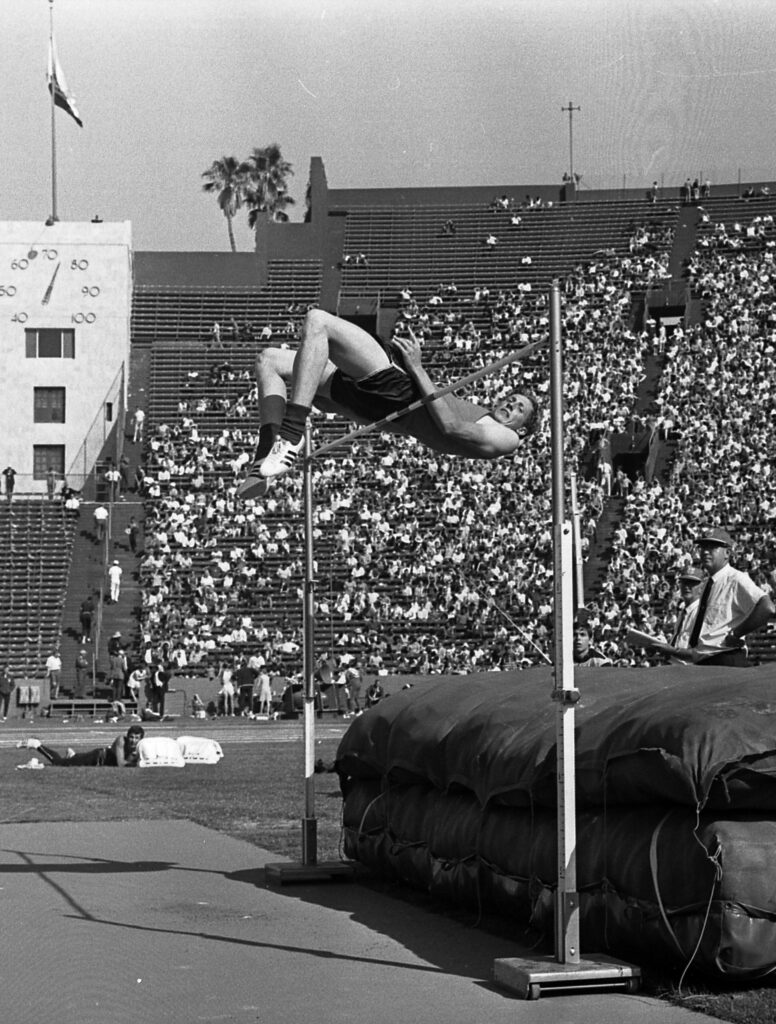Dick Fosbury, the visionary athlete whose innovative high jump technique revolutionized the sport and left an enduring legacy, has died at the age of 76, The New York Times reports. Fosbury’s signature “flop,” introduced during the 1968 Mexico City Olympics, upended conventional methods and quickly became the new standard for high jumpers worldwide. His passing marks the end of an era for a figure whose ingenuity redefined athletic performance and inspired generations.
Dick Fosbury’s Revolutionary Technique Changed Athletics Forever
Prior to Dick Fosbury’s innovation, high jumpers relied on methods such as the straddle, scissors, and western roll to clear the bar. However, Fosbury introduced a technique that defied convention: he approached the bar at an angle, leapt backward over it, and landed on his back. This unorthodox approach, later named the “Fosbury Flop,” revolutionized the sport by enabling athletes to clear greater heights with improved efficiency and safety. After debuting the Flop at the 1968 Mexico City Olympics-where he won gold and set an Olympic record-the technique quickly gained global dominance, becoming the standard for high jumpers worldwide.
The impact of Fosbury’s technique extended beyond just sporting technique; it fundamentally changed training regimens and equipment design. Landing pits transitioned from sand or wood chips to deep foam mats to accommodate the backward landing safely. Coaches began emphasizing biomechanical analysis, seeking to optimize approach angles and body positions. Below is a brief comparison of high jump techniques before and after Fosbury’s breakthrough:
| Technique | Body Position | Landing Surface | Popularity Post-1968 |
|---|---|---|---|
| Straddle | Face down, legs straddling bar | Sand or wood chips | Declined |
| Scissors | Upright, legs scissor motion | Sand or wood chips | Rarely used |
| Fosbury Flop | Back-first, arched over bar | Foam mats | Dominant |
- Safety improvements: Enabled by innovative foam landing pits.
- Training evolution: Shift toward scientific analysis of jumps.
- Legacy: Fosbury’s style remains the gold standard more than 50 years later.
The Life and Legacy of the Inventor of the Fosbury Flop
Dick Fosbury revolutionized the high jump with his innovative technique, forever changing the way athletes cleared the bar. Prior to Fosbury’s breakthrough, jumpers predominantly used the straddle or scissors styles. However, at the 1968 Mexico City Olympics, his unconventional backward jump, dubbed the “Fosbury Flop,” not only earned him the gold medal but also challenged traditional athletic norms. This leap of creativity sparked a paradigm shift in track and field, influencing generations of jumpers worldwide.
Beyond his Olympic triumph, Fosbury’s legacy is characterized by his blend of athletic ingenuity and determination. His technique emphasized the importance of biomechanical efficiency and body positioning, demonstrating how thinking outside the box could lead to tangible success. Today, nearly every high jumper employs some form of the Flop, illustrating the lasting impact of his contribution. The table below highlights a brief comparison of high jump techniques before and after Fosbury’s influence:
| Technique | Common Era | Key Characteristics |
|---|---|---|
| Straddle | Pre-1968 | Face-down, leg-over-bar lead with a powerful push |
| Scissors | Evolved since early 20th century | Simple, upright jump with legs scissoring over |
| Fosbury Flop | Post-1968 | Backward arch over the bar with head first clearance |
- Innovative Vision: Fosbury’s method challenged entrenched ideas about athletic form.
- Global Influence: Adoption of the flop sparked new training methods worldwide.
- Lasting Impact: The technique remains dominant in competitive high jumping today.
How Modern High Jumpers Can Learn from Fosbury’s Innovation
Modern high jumpers continue to draw inspiration from Dick Fosbury’s revolutionary technique, which defied traditional methods and redefined what was possible in the sport. By arching the back and crossing the bar headfirst with the back to the bar-a method initially met with skepticism-Fosbury demonstrated the power of innovation and risk-taking. Today’s athletes benefit not only from this technique but also from the mindset it instilled: embracing experimentation and trusting one’s unique approach to overcome physical limits.
Lessons from Fosbury’s legacy that remain crucial include:
- Adapting technique to personal strengths rather than conforming to established norms
- Utilizing advances in biomechanics and technology to refine form
- Leveraging mental resilience to silence critics and persist through setbacks
| Aspect | Traditional Style | Fosbury Flop |
|---|---|---|
| Body Position | Face-down or side-on | Back-first over the bar |
| Efficiency | Lower clearance heights | Maximizes center of mass height |
| Adoption | Phased out | Dominant technique worldwide |
Key Takeaways
Dick Fosbury’s passing marks the end of an era for a sport forever changed by his innovation. At 76, the man whose unconventional “Fosbury Flop” revolutionized the high jump left a lasting legacy that transcended athletics, embodying the power of creativity and determination. As the track and field community and fans around the world remember his contributions, Fosbury’s impact will continue to inspire future generations of athletes seeking to defy convention and reach new heights.





